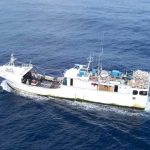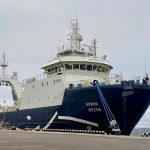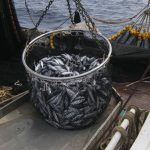The Russian Alaska pollock fishery in the exclusive economic zone (EEZ) of the Russian Federation and the US is second only to the Peruvian anchovy fishery in size. It is Russia’s largest fishery.
In 2008, the Russian Alaska pollock fishery was pre-assessed according to Marine Stewardship Council (MSC) standards and, in 2009, the process of full assessment of the Russian pollock fishery began.
After a meeting recently between The World Wide Fund for Nature (WWF) and the Russian Pollock Catchers Association (PCA), the environmentalist organisation said it welcomed the “responsible approach” pollock fishing and to the ongoing efforts to endorse high standards of the Code for Responsible Fisheries in the management and production of the country’s fisheries.
PCA affirmed that it backs the concept of creating a Fishery Improvement Plan (FIP) for the fishery, and came up with a list of agreed innovations in management and supervising plus the timing of their implementation.
“The parties believe that [they are] improving the existing system of assessment of catch, discards and bycatch, and also note the absence in [Russia’s] full-fledged system of traceability of origin of fish, resulting in [a] “window of vulnerability” for [the] entry of Illegal, Unregulated and Unreported (IUU) catches, fishing in legitimate traffic and risks to the supply chain,” the groups said in a joint statement.








